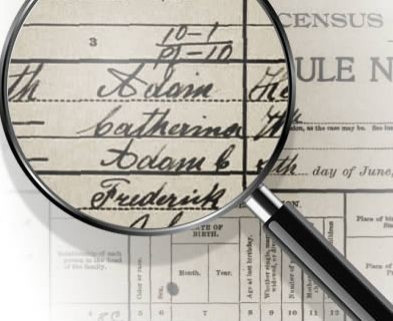1940 Census: Causes Of Death Then And Now

The U.S. Census Bureau released detailed information from the 1940 Census online on Monday, and Americans responded in droves -- 22.5 million people visited the site in the first three hours, crashing it. The census contains nearly 4 million images of handwritten pages and is the first to be searchable online.
The 1940 Census collected personal data such as address, sex, race, age and employment from the more than 132 million people living in the country at the time.
Public health concerns and attitudes were very different in the 1930s than they are today. Smoking was widespread, polio was rampant and the Great Depression left many people unable to pay their medical bills. The average life expectancy was a little over 60 years old, a far cry from the almost 80 years old the average American reaches today.
But despite major medical advances in the last 80 years or so, many of the leading causes of death are the same from the 1930s to today, according to the Centers for Disease Control and Prevention. Heart disease, high blood pressure and related conditions have consistently been the leading cause of death since 1910. In the 1930s, heart disease killed an average of 307,000 people per year. In 2009, the last year with data available, heart disease killed almost 600,000 people.
The numbers, however, are skewed. Population has increased by more than 130 percent since the 1940 Census was taken. Looking at the rate of death, you find that heart disease, which killed 292.5 people per 100,000 in the 1930s, only killed 179.8 people per 100,000 in 2009.
While heart disease is killing fewer people per year, cancer -- the No. 2 cause of death then and now -- is actually killing more. Per 100,000, cancer killed 120.3 people in the 1930s. In 2009, 173.6 -- almost as many as heart disease.
Other causes of death that have changed from the 1930s to today include the flu/pneumonia (75.7 per 100,000 then, 16.2 now), kidney disease (82.9/14.8), and diabetes (25.5/20.9).
Tuberculosis, a treatable lung infection that causes chest pain, coughing, weight loss, fever and night sweats, represents the most dramatic change in mortality figures. TB killed more than 70,000 people annually in the 1930s, a death rate of 47.1. In 2009, TB killed 547 people -- a number so small the death rate is less than one per 100,000.
Diarrhea and premature birth were two leading causes of death in the '30s as well, but both have a death rate of around 1 per 100,000 today, according to the CDC.
Alzheimer's had a death rate of 25.7 per 100,000, and was the sixth leading cause of death in the United States in 2009. The death rate of Alzheimer's in the 1930s is not available, but has been increasing steadily since at least the 1980s. One reason for the increase is life expectancy, according to the Alzheimer's Association. Alzheimer's chiefly affects people 65 or older, and every five years after 65, the risk of Alzheimer's doubles. With life expectancy so much higher, more people are developing the disease.
Health issues aside, life was very different in the 1930s, and the census shows that. The country was much less racially diverse, far more Americans ages 20-34 were married than they are today, and women earned only half of what their male counterparts did -- and there are many people who can attest to that. More than 21 million people from the 1940 Census are still alive today, according to the Associated Press.
The census can be viewed here: 1940census.archives.gov
© Copyright IBTimes 2025. All rights reserved.





















